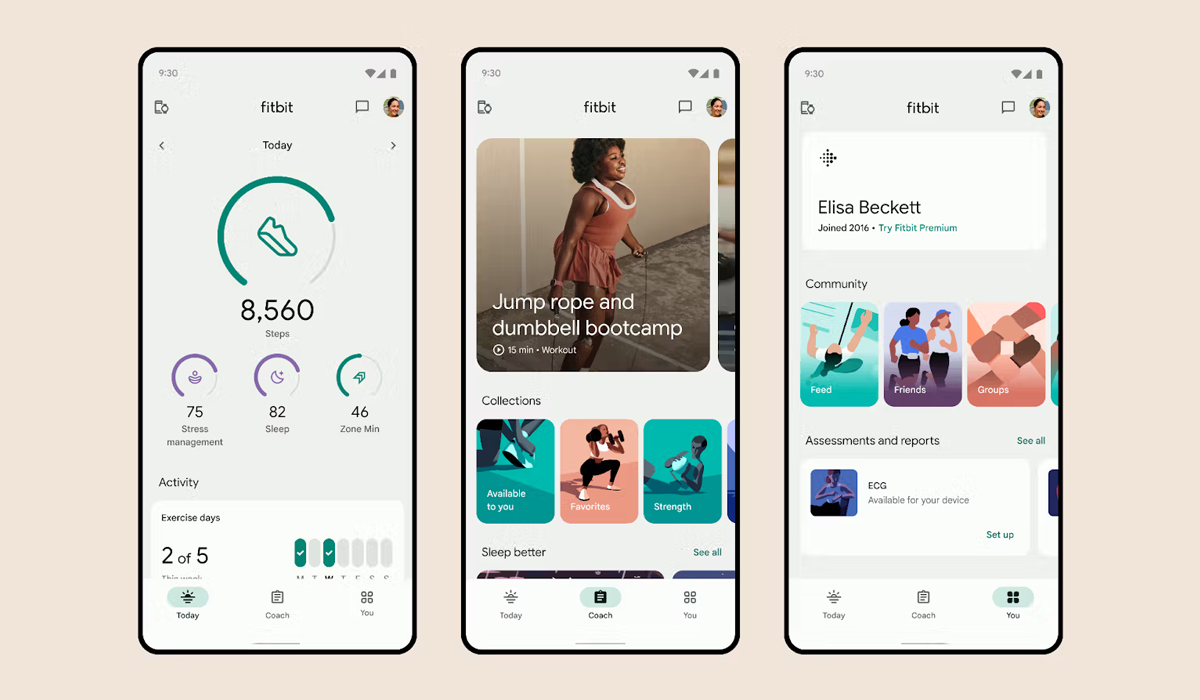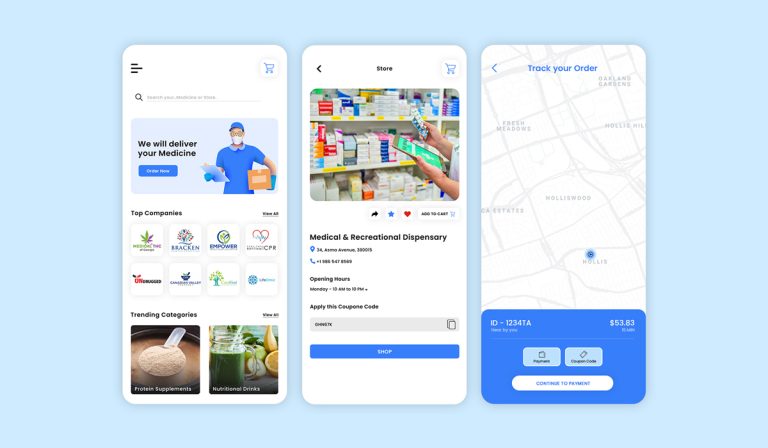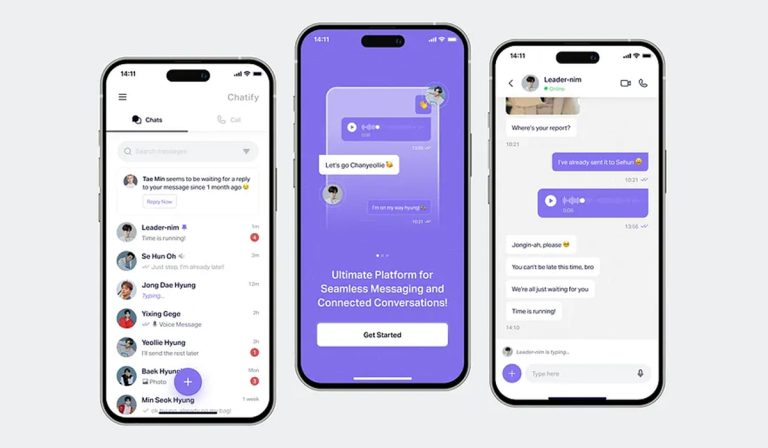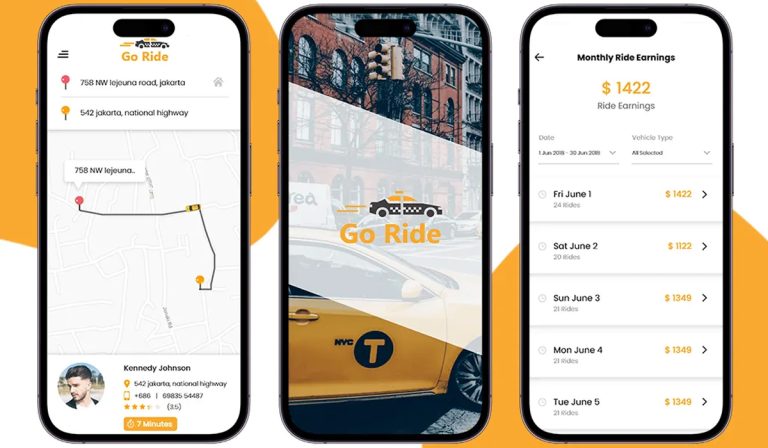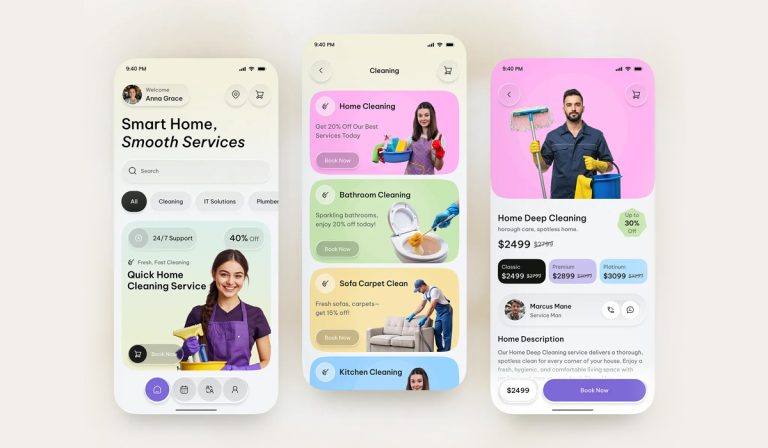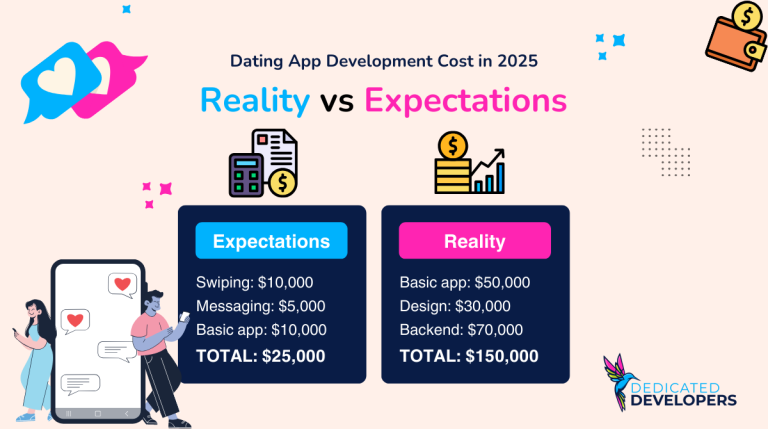On-Demand Fitness App Development Cost in 2025: What Actually Drives the Price
How expensive could it be?

Market Landscape
The on-demand fitness app market is experiencing explosive growth, driven by permanent behavioral shifts from the pandemic, rising health consciousness, and technological advancement in wearables and AI
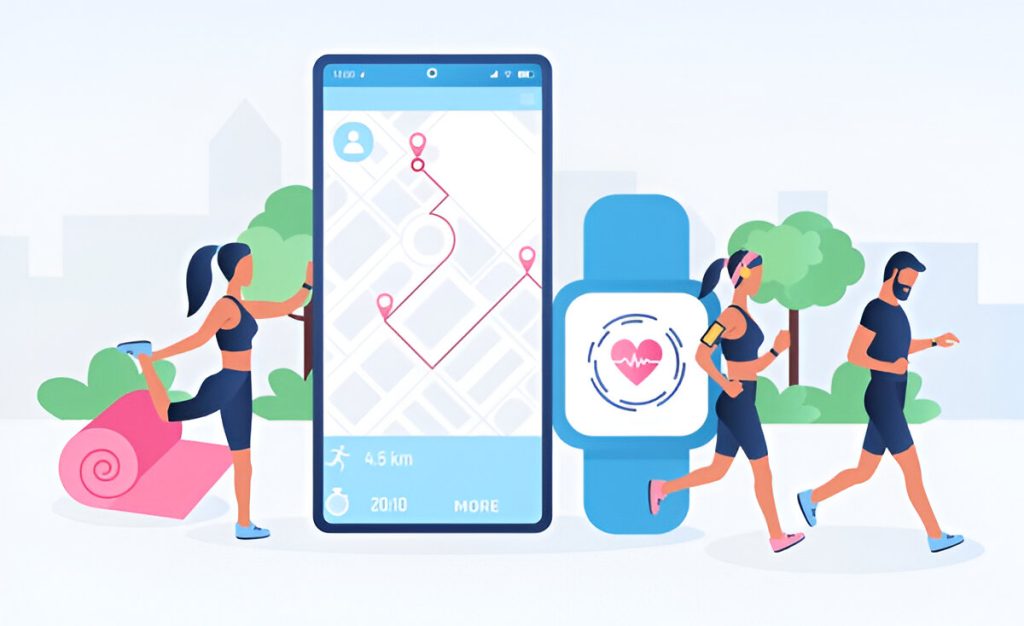
Market Fundamentals:
Current Market Size
$10.59 billion (2024)
Projected Market Size
$33.58 billion by 2030
Growth Rate
13.59% CAGR (2025-2030)
Global Active Users
74% of Americans use at least one fitness app
Daily Messages
858 million fitness app downloads in 2023
Market Leaders & Their Success

200+ million users, $14 million food database, acquired by Under Armour for $475 million

3+ million members, $1.4 billion revenue (2023), revolutionized connected fitness

30+ million users, free premium content strategy, deep integration with Nike ecosystem

100+ million users, $200+ million revenue, community-driven engagement model

39+ million active users, acquired by Google for $2.1 billion, wearable integration leader
Emerging Opportunities:
- AI Personal Training: Machine learning algorithms creating adaptive workout plans that rival human trainers
- Wearable Integration: Apple Watch, Fitbit, and Garmin connectivity with real-time heart rate and performance tracking
- Live Streaming Fitness: On-demand and live classes with real-time instructor feedback and community engagement
- Nutrition + Fitness Fusion: Integrated meal planning, calorie tracking, and macro management tied to workout goals
- Corporate Wellness Programs: B2B fitness solutions with 30% of companies offering app-based wellness benefits
- Mental Wellness Integration: Meditation, sleep tracking, and stress management combined with physical fitness

Essential Features Deep Dive
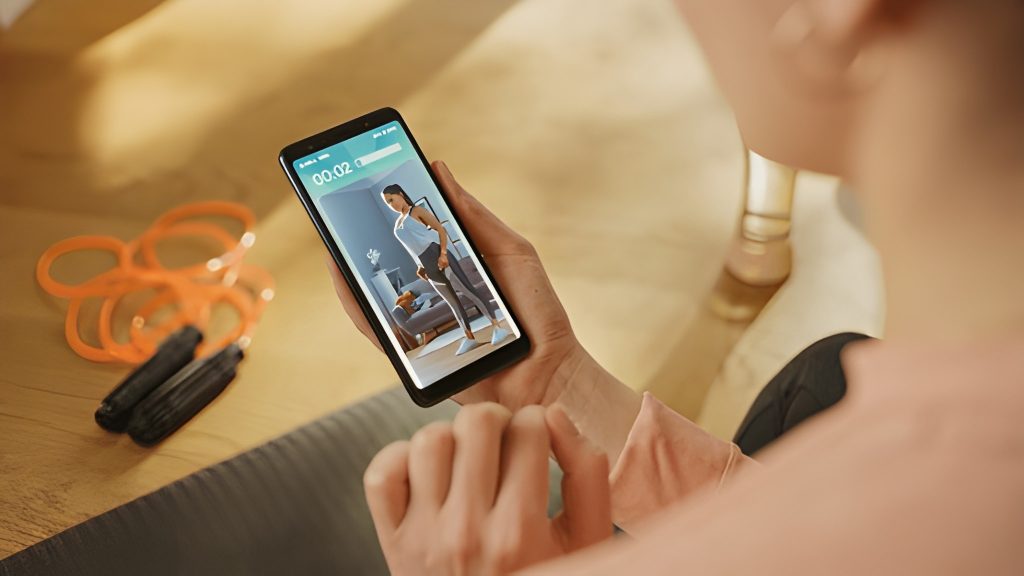
Not all fitness apps are created equal. Your feature set directly determines development complexity and cost. Here’s what separates basic trackers from comprehensive platforms:
Essential Features
(Foundation Layer – All Apps)

User Authentication & Profiles:
Secure registration, social login integration, comprehensive profile management with fitness goals, current stats (weight, height, fitness level), and health conditions. Implementation: $8,000-15,000.

Workout Library & Video Streaming:
Categorized exercise database with high-quality instructional videos, difficulty levels, muscle group targeting, and equipment requirements. Video streaming infrastructure supporting multiple resolutions and adaptive bitrate. Implementation: $15,000-28,000.
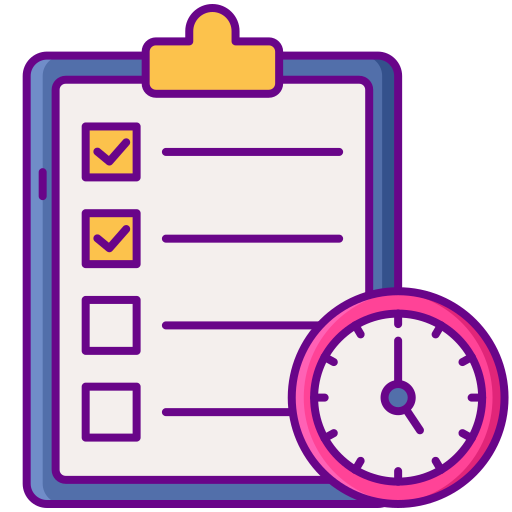
Progress Tracking:
Workout completion logging, exercise set/rep/weight tracking, personal records, visual progress charts, and before/after photo comparisons. Implementation: $12,000-22,000.

Basic Scheduling:
Workout calendar, reminder notifications, rest day scheduling, and simple routine planning. Implementation: $6,000-12,000.

Push Notifications:
Workout reminders, milestone celebrations, motivational messages, and streak maintenance alerts. Implementation: $4,000-8,000.
Advanced Features
(Competitive Differentiation)
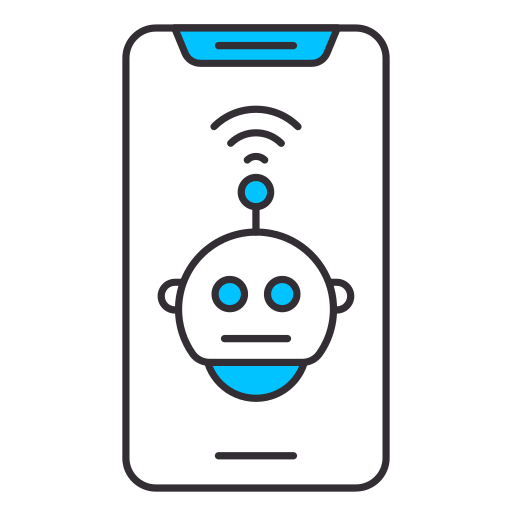
AI-Powered Personal Training:
Machine learning algorithms analyzing user performance, automatically adjusting workout difficulty, predicting optimal rest periods, and recommending exercises based on progress patterns and fitness goals. This is the difference between a static workout app and intelligent coaching. Implementation: $25,000-45,000.
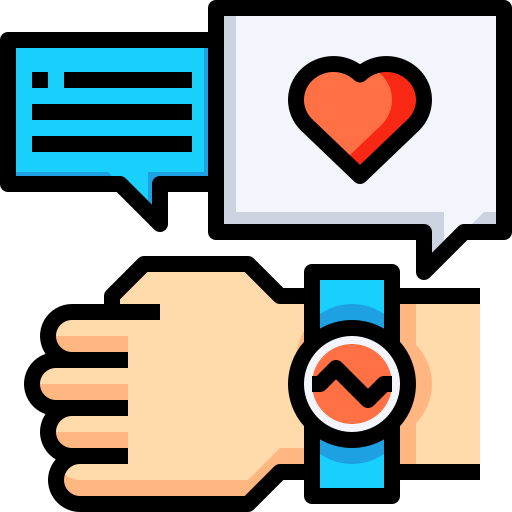
Wearable Device Integration:
Real-time synchronization with Apple Watch, Fitbit, Garmin, and other wearables. Heart rate monitoring during workouts, calorie burn calculations, sleep quality tracking, and recovery recommendations based on biometric data. Implementation: $18,000-32,000.

Nutrition Tracking & Meal Planning:
Comprehensive food database with barcode scanning, macro and calorie tracking, meal planning based on fitness goals, recipe suggestions, and integration between nutrition and workout performance. Implementation: $20,000-35,000.

Live Streaming & On-Demand Classes:
Live instructor-led classes with real-time interaction, on-demand video library with multiple categories (HIIT, yoga, strength training, pilates), video quality options, and download for offline viewing. Implementation: $28,000-50,000.

Social & Community Features:
Follow other users, share workouts and achievements, challenge friends, leaderboards, community forums, and social workout accountability groups. Implementation: $15,000-25,000.

Form Correction & Motion Tracking:
AI-powered computer vision analyzing workout form through device camera, real-time feedback on exercise technique, injury prevention alerts, and rep counting automation. Implementation: $35,000-60,000.
Premium Features
(Market Leadership)
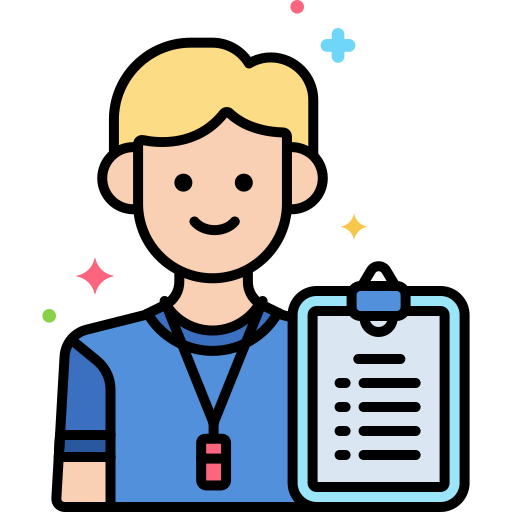
Personal Trainer Matching & Booking:
Marketplace connecting users with certified trainers, video consultation scheduling, in-app chat with trainers, custom workout plan creation by professionals, and trainer payment processing. Implementation: $30,000-55,000.
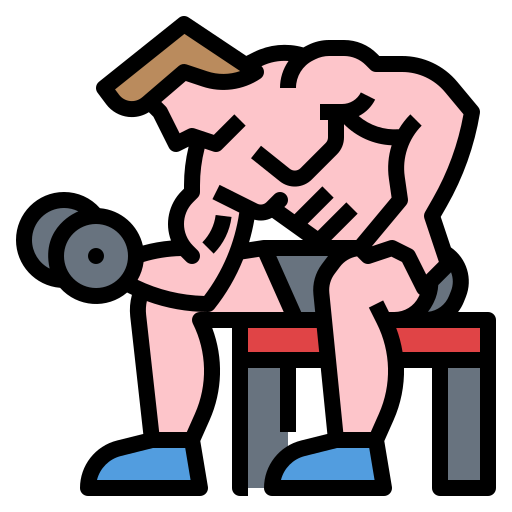
AR/VR Workout Experiences:
Augmented reality overlay showing proper form, virtual reality immersive workout environments, gamified fitness experiences, and interactive training scenarios. Implementation: $40,000-70,000.

Advanced Analytics & Insights:
Comprehensive performance analytics, body composition tracking, strength progression curves, workout effectiveness analysis, recovery time optimization, and predictive injury risk assessment. Implementation: $22,000-40,000.

Corporate Wellness Integration:
B2B dashboard for company wellness programs, team challenges, employer-sponsored features, health insurance integration, and compliance reporting. Implementation: $35,000-65,000.
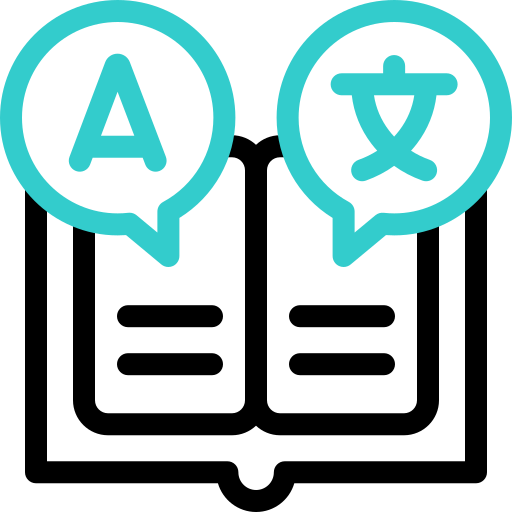
Multi-Language & Accessibility:
Support for 10+ languages, voice-guided workouts, screen reader compatibility, closed captions on all videos, and accessibility features for users with disabilities. Implementation: $15,000-28,000.
Development Cost Breakdown

Understanding the cost structure helps you budget effectively and avoid surprises. Here’s how fitness app development costs break down across different complexity levels:
MVP (Minimum Viable Product) $85,000 – $145,000
Timeline: 5-7 months
Included Features
- User registration and profiles
- Workout library (50-100 exercises with videos)
- Basic progress tracking
- Workout scheduling and reminders
- Push notifications
- Simple nutrition logging
- Basic admin panel
iOS or Android (single platform)
Who It’s For: Fitness startups validating market fit, personal trainers expanding to digital, small studios testing app-based offerings
ROI Timeline: 18-24 months with focused user acquisition
Standard Platform: $150,000 – $230,000
Timeline: 7-10 months
- Everything in MVP, plus
- Both iOS and Android platforms
- Wearable device integration (Apple Watch, Fitbit)
- AI-powered workout recommendations
- Comprehensive nutrition tracking with barcode scanning
- Live streaming capability (basic)
- Social features and community
- Advanced progress analytics
- In-app payments and subscriptions
- Enhanced admin dashboard with user analytics
Who It’s For: Established fitness brands going digital, well-funded startups, gym chains creating member apps
ROI Timeline: 12-18 months with strong marketing execution
Premium Platform $240,000 – $320,000
Timeline: 10-14 months
Included Features
- Advanced AI personal training with adaptive algorithms
- Form correction using computer vision
- Personal trainer marketplace and booking
- On-demand and live streaming with instructor interaction
- Comprehensive meal planning and recipe database
- AR workout experiences
- Corporate wellness B2B features
- Advanced analytics and reporting
- Multi-language support
- Third-party fitness app integrations
- Custom branded white-label options
- Priority support and maintenance
Who It’s For: Major fitness brands, venture-backed startups targeting rapid scale, established companies entering fitness market
ROI Timeline: 8-15 months with proper positioning and marketing
- Wearable device certification (Apple, Fitbit) adds $8,000-15,000
- Video hosting and streaming infrastructure: $500-3,000/month ongoing
- Third-party API costs (nutrition databases, mapping): $200-1,200/month
- App store fees (Apple 30%, Google 15-30% of subscription revenue)
- Content creation (professional workout videos): $30,000-100,000 for initial library
- Certified trainer/nutritionist consultations during development: $10,000-25,000
Development Timeline Reality

Realistic timeline expectations prevent disappointment and poor decisions. Rushing fitness app development typically results in poor video performance, buggy wearable integration, and unreliable data synchronization—all of which destroy user trust immediately.
Phase 1: Discovery & Planning (3-4 weeks)
Market Research & Strategy:
- Competitive analysis of existing fitness apps
- Target audience definition and persona development
- Feature prioritization and MVP scope
- Content strategy (types and quantity of workouts)
- Trainer/expert partnerships and content acquisition
- Business model validation (subscription vs freemium)
Design Foundation:
- User flow mapping for workout discovery, tracking, and social features
- Wireframing and prototyping key screens
- Design system and component library
- Video player interface and streaming experience design
- Brand identity and visual design
Phase 2: Core Development (12-16 weeks)
Sprint 1-2 (Weeks 5-8):
- User authentication and profile management
- Database architecture and API development
- Basic workout library and content management
- Admin panel setup for content management
Sprint 3-4 (Weeks 9-12):
- Video streaming implementation
- Progress tracking and workout logging
- Workout scheduling and calendar
- Push notification system
- Basic analytics dashboard
Sprint 5-6 (Weeks 13-16):
- Wearable device integration (primary platform)
- Nutrition tracking features
- Social features (if in scope)
- Payment integration and subscription management
- Search and filtering functionality
Phase 3: Advanced Features (4-6 weeks)
- AI recommendation engine implementation
- Live streaming capability
- Form analysis (if in scope)
- Personal trainer features
- Advanced analytics and reporting
- Content optimization and performance tuning
Phase 4: Testing & Launch (3-4 weeks)
- Comprehensive QA testing across devices
- Video streaming performance testing
- Wearable integration testing
- Security and data privacy audit
- Beta testing with real users
- App store submission and approval
- Soft launch preparation
- Marketing materials and app store optimization
Timeline Reality Check:
- Video streaming issues discovered late cost 3-5x more to fix
- Wearable integration requires Apple/Google review adding 2-3 weeks
- Quality fitness platforms require 6-8 months minimum
- Live streaming adds 2-3 months to timeline
- Post-launch iteration budget essential for user feedback
Regional Cost Analysis

Development team location significantly impacts costs while quality can remain high across regions:
United States & Canada
Hourly Rate: $125-200
Project Cost: $140,000-$320,000
Timeline: Standard to faster
Advantages: Native English communication, same timezone, deep fitness app expertise, strong compliance knowledge (HIPAA, FDA), immediate communication
Eastern Europe (Excellent Value)
Poland, Ukraine, Romania
Hourly Rate: $50-95
Project Cost: $95,000-$220,000
Timeline: Standard
Advantages: Strong technical skills, European data protection compliance (GDPR), overlapping work hours, cultural alignment, excellent English
Asia (Cost-Effective)
India, Vietnam, Philippines
Hourly Rate: $25-65
Project Cost: $65,000-$160,000
Timeline: Can be longer due to communication
Advantages: Lowest hourly rates, large talent pool, experience with health apps, 24/7 development cycle potential
Challenges: Time zone differences, communication overhead, quality variance between providers
Hybrid Approach (Recommended)
US-Based Product Management + Offshore Development
Project Cost: $105,000-$230,000 (30-40% savings)
Structure: US product manager/designer with Eastern European or Asian development team
Advantages: Cost savings with quality control, timezone bridge, cultural understanding, effective communication
Best For: Most startups, companies wanting cost efficiency with hands-on oversight
Third-Party Services & Integrations

Modern fitness apps are built on specialized third-party services. Building everything yourself costs 3-5x more than integrating proven solutions.
Essential Services
Wearable Platforms (Apple HealthKit, Google Fit, Fitbit SDK):
Integration with wearable ecosystems for heart rate, steps, calories, sleep data, and workout auto-detection. Each platform has specific requirements and testing procedures. Integration cost per platform: $6,000-12,000. Apple Watch requires specific watch app development: additional $15,000-25,000.
Video Hosting & CDN (Vimeo, AWS CloudFront, Wistia):
Professional video hosting with adaptive streaming, multiple quality options, global CDN for fast loading anywhere, and analytics on video engagement. Setup cost: $8,000-15,000. Monthly cost: $500-3,000 depending on views and storage.
Nutrition Databases (Nutritionix, USDA API, Edamam):
Comprehensive food databases with 500,000+ foods, barcode scanning, restaurant menu data, and macro/micro nutrient information. Integration cost: $6,000-12,000. API costs: $100-800/month based on requests.
Payment Processing (Stripe, RevenueCat):
Subscription management, trial periods, multiple pricing tiers, international payment support, Apple Pay/Google Pay integration, and automated billing. Integration cost: $8,000-15,000. Transaction fees: 2.9% + $0.30 per transaction, plus app store fees (30% first year, 15% after).
Push Notifications (Firebase Cloud Messaging, OneSignal):
Workout reminders, achievement celebrations, challenge updates, and personalized motivation messages. Critical for retention and engagement. Integration cost: $4,000-8,000. Usage cost: $0.001-0.01 per notification.
Live Streaming (Twilio Video, Agora, Amazon IVS):
Real-time video streaming for live classes, one-on-one trainer sessions, and interactive workouts with ultra-low latency. Integration cost: $12,000-22,000. Usage cost: $0.02-0.15 per minute per participant.
Analytics & User Insights (Mixpanel, Amplitude):
User behavior tracking, workout completion rates, feature usage analysis, cohort retention analysis, and A/B testing infrastructure. Integration cost: $5,000-10,000. Monthly cost: $200-1,500 based on data volume.
Content Management System:
Backend system for trainers to upload new workouts, create programs, manage video content, and publish updates without developer assistance. Development cost: $15,000-28,000.
Security & Compliance:
Health apps collect sensitive personal data requiring strong security measures and regulatory compliance.
- HIPAA compliance (if handling Protected Health Information): $15,000-35,000 for implementation and audit
- GDPR compliance for European users: data encryption, right-to-erasure, consent management
- SSL/TLS encryption for all data transmission
- Secure data storage with encryption at rest
- Regular security audits and penetration testing: $8,000-15,000 annually
- Privacy policy and terms of service legal review: $3,000-8,000
- FDA compliance (if making health claims): $20,000-50,000+ for regulatory consultation
Monetization & ROI Analysis

Understanding how fitness apps generate revenue helps validate your development investment:
Proven Revenue Models
Freemium Subscription (Most Common):
Free basic features with premium subscription for advanced features. MyFitnessPal uses this successfully with 10% conversion rate to premium.
- Free: Basic workout logging, limited workout library
- Premium ($9.99-19.99/month): Full workout library, AI training, nutrition tracking, live classes
- Conversion Rate: 8-15% of free users upgrade
- Average Revenue Per User (ARPU): $45-75/year
Pure Subscription:
Paid app or mandatory subscription for access. Works for brands with existing audience or unique content. Peloton Digital uses this model successfully.
- Monthly: $12.99-29.99/month
- Annual: $99-199/year (2-3 months free)
- Retention: 60-70% year-over-year for quality apps
- Average ARPU: $120-180/year
Personal Training Marketplace:
Take commission on trainer bookings and consultations. Trainerize uses hybrid model with both subscription and marketplace revenue.
- Platform fee: 15-25% of trainer earnings
- Subscription: $10-20/month for base features
- Trainer revenue: $50-150 per session
- Average ARPU: $85-140/year
Corporate Wellness (B2B):
Sell to companies for employee wellness programs with higher contract values.
- Per-employee pricing: $5-15/month
- Minimum contract: 50-100 employees
- Annual contracts: $30,000-180,000 per company
- Higher lifetime value but longer sales cycles
Sponsorship & Partnerships:
Fitness brands, supplement companies, healthy food brands advertising to engaged audience.
- Sponsored workout programs
- Branded challenges and competitions
- Affiliate marketing for fitness products
- Revenue: $0.50-3.00 per active user/month
ROI Projections (Standard Platform – $180,000 investment)
Year 1:
- Users: 5,000 active users (aggressive marketing)
- Conversion: 10% to premium ($14.99/month)
- MRR: $7,500
- ARR: $90,000
- Marketing cost: $40,000
- Hosting/ops: $24,000
- Net: $26,000 (Cumulative: -$154,000)
Year 2:
- Users: 15,000 active users
- Conversion: 12% to premium
- MRR: $26,970
- ARR: $323,640
- Marketing cost: $80,000
- Hosting/ops: $48,000
- Maintenance: $27,000 (15% of dev cost)
- Net: $168,640 (Cumulative: +$14,640) ✅ Break-even
Year 3:
- Users: 35,000 active users
- Conversion: 15% to premium
- MRR: $78,713
- ARR: $944,550
- Marketing cost: $150,000
- Hosting/ops: $84,000
- Maintenance: $27,000
- Feature additions: $40,000
- Net: $643,550 (Cumulative: +$658,190)
Key Metrics for Success:
- User Acquisition Cost (UAC): $5-15 per user
- Monthly Active Users (MAU): 40-60% of total registered
- Workout Completion Rate: 35-50% for quality apps
- Free to Paid Conversion: 8-15%
- Monthly Churn: 5-8% (lower is better)
- Lifetime Value (LTV): $200-400 for subscription apps
- LTV:CAC Ratio: Target 3:1 minimum
Real-World Case Studies

Case Study 1: Personal Trainer App for Studios
Profile: Boutique fitness studio chain (5 locations) wanted app for members to access classes on-demand and book in-studio sessions.
Challenges:
- Needed integration with existing booking system
- Required live streaming for virtual classes
- Wanted to maintain brand identity from studios
- Limited technical expertise on team
Solution Built:
- MVP approach focusing on core features
- iOS and Android apps with white-label branding
- Integration with Mindbody for class scheduling
- Live streaming using Agora for virtual classes
- On-demand video library with 100 classes
- Member profiles and progress tracking
Investment: $135,000
Timeline: 6 months from kickoff to launch
Stack: React Native, Node.js, PostgreSQL, AWS, Agora for streaming
Results After 12 Months:
- 2,800 active users (45% of total membership)
- 12% conversion to $19.99/month premium
- $67,200 first year app revenue
- 30% reduction in member churn
- Expanded to 3 additional studio locations
Key Success Factor: Started with single platform, added features based on user feedback rather than building everything upfront.
Case Study 2: AI-Powered Workout App
Profile: Funded startup creating AI personal trainer competing with Freeletics and Fitbod.
Challenges:
- Highly competitive market with established players
- Needed true AI differentiation, not just basic algorithms
- Required wearable integration for competitive feature set
- Complex recommendation engine development
Solution Built:
- Premium platform with sophisticated AI
- Custom machine learning models for workout adaptation
- Apple Watch and Fitbit integration with heart rate training zones
- Form analysis using device camera and pose estimation
- Comprehensive progress analytics and insights
- Social features with challenges and leaderboards
Investment: $285,000
Timeline: 11 months development + 2 months beta testing
Stack: Native iOS/Android, Python (ML models), TensorFlow, AWS, Redis caching
Results After 18 Months:
- 28,000 active users across both platforms
- 22% conversion to $14.99/month subscription
- $1.1M ARR with 8% monthly growth
- Featured by Apple in “New Apps We Love”
- Acquired additional $2M funding based on traction
Key Success Factor: AI that actually works made the difference. Invested heavily in training data and model refinement, creating genuine personalization that users could feel.
Case Study 3: Corporate Wellness Platform
Profile: Established wellness company wanted B2B fitness app for corporate clients.
Challenges:
- Needed enterprise features (SSO, company dashboards)
- Required HIPAA compliance for health data
- Integration with major insurance providers
- Complex admin capabilities for HR departments
Solution Built:
- B2B-focused platform with company admin portals
- SSO integration with Azure AD and Okta
- HIPAA-compliant infrastructure and data handling
- Team challenges and company leaderboards
- Wellness point tracking for insurance premium discounts
- Reporting and analytics for HR departments
Investment: $245,000
Timeline: 9 months including compliance work
Stack: Native iOS/Android, Java backend, MongoDB, Azure cloud, HIPAA-compliant infrastructure
Results After 12 Months:
- 8 corporate clients signed (500-2,000 employees each)
- $425,000 ARR from corporate subscriptions
- 62% employee activation rate (industry average: 30%)
- Expansion to 15 additional companies in pipeline
- Average contract value: $55,000/year
Key Success Factor: Focused exclusively on B2B needs (admin tools, reporting, compliance) rather than trying to compete in consumer market. Corporate sales cycles longer but contract values much higher.
Case Study 4: Niche Fitness Community App
Profile: Startup targeting women’s fitness community with focus on strength training and body positivity.
Challenges:
- Needed to build strong community features
- Wanted expert trainer content and programs
- Required sensitive approach to progress tracking and body image
- Limited budget as bootstrapped startup
Solution Built:
- Standard platform with enhanced social features
- Partnership with 5 female trainers for exclusive content
- Community-first features: group challenges, support groups, success stories
- Alternative progress metrics beyond weight (strength gains, energy, confidence)
- Inclusive workout library for all fitness levels
Investment: $165,000
Timeline: 7 months with phased feature rollout
Stack: Flutter for cross-platform, Firebase for backend, Stripe for payments
Results After 15 Months:
- 12,500 active users with highly engaged community
- 18% conversion to $12.99/month (above industry average)
- 82% user retention after 3 months (exceptional)
- Organic growth of 15% monthly from community referrals
- Trainer partnership generated additional content revenue
Key Success Factor: Community focus created loyal user base that marketed the app organically. Users stayed for the community even more than the workouts, driving exceptional retention.
Common Pitfalls That Destroy Budgets

Learn from others’ expensive mistakes. These pitfalls have cost fitness startups millions in wasted development and lost market opportunity:
1. Building Everything Custom Instead of Using Proven Services
The Mistake: Startup spent $95,000 building custom video hosting infrastructure instead of using Vimeo API ($8,000 integration).
What Happened: Custom solution couldn’t handle traffic spikes, required constant maintenance, and eventually had to be replaced with Vimeo anyway after users complained about buffering.
Cost Impact: $95,000 wasted + $8,000 for proper integration + $15,000 to fix data migration = $118,000 total damage
Lesson: Use specialized services for video, payments, notifications, and analytics. Build custom only for your unique value proposition (AI algorithms, unique features, proprietary content).
2. Skimping on Video Quality and Streaming Infrastructure
The Mistake: Fitness app launched with low-quality video (480p) and basic streaming to save initial costs ($12,000 savings).
What Happened: Users immediately complained about video quality, app got 2.3 star ratings, and 60% of new users churned within first week. Eventually spent $45,000 to completely redo video system and re-film content in HD.
Cost Impact: $45,000 remediation + lost users and poor ratings damaging brand = estimated $150,000 total impact
Lesson: Workout video quality is non-negotiable. Users compare your app to Peloton and Apple Fitness+. Invest in professional video production and robust streaming infrastructure from day one.
3. Ignoring Wearable Integration Until “Later”
The Mistake: Built MVP without any wearable integration to “validate concept first,” planning to add Apple Watch support later.
What Happened: Users expected wearable sync as baseline feature. App couldn’t compete and struggled to gain traction. Adding wearable support later required significant architecture changes because data models weren’t designed for it.
Cost Impact: $35,000 to retrofit wearable integration + 4 months delay + lost early adopter momentum
Lesson: Modern fitness apps require wearable integration. Plan for it from day one even if you don’t launch with every device. Design your data architecture to accommodate biometric data from the start.
4. Underestimating Content Creation Costs
The Mistake: Budgeted only for app development ($140,000) but no budget for professional workout content creation.
What Happened: Launched with founder filming iPhone videos in their living room. Poor production quality made app look amateur compared to competitors. Had to spend $75,000 hiring trainers and videographer to create professional content library.
Cost Impact: $75,000 unplanned spending + 3 months delay + poor initial user perception
Lesson: Budget $30,000-100,000 for professional content creation. This includes hiring certified trainers, professional videographer, studio rental, and editing. Your app is only as good as your content.
5. Building Features Nobody Uses
The Mistake: Built comprehensive meal prep shopping list feature, recipe collection, and grocery delivery integration ($45,000 development) without validating user interest.
What Happened: Analytics showed only 3% of users ever used the feature. Resources better spent on core workout features that 85% of users wanted improved.
Cost Impact: $45,000 wasted on unused features + ongoing maintenance burden
Lesson: Validate feature ideas with user research, surveys, and MVP testing before building. Start with core workout and tracking features. Add nutrition and advanced features based on actual user demand, not assumptions.
6. Choosing Cheapest Development Team Without Vetting
The Mistake: Selected overseas team bidding $55,000 (half the price of other quotes) for standard platform without checking portfolio or references.
What Happened: Poor code quality, missed deadlines, communication problems, and eventual project abandonment at 60% complete. Had to start over with new team, losing $35,000 already paid and 6 months of time.
Cost Impact: $35,000 lost to failed project + $165,000 to rebuild properly + 6 months lost time = $200,000+ total impact
Lesson: Evaluate development partners on portfolio, references, communication, and technical expertise—not just price. A $120,000 project delivered successfully beats a $60,000 project that fails.
7. Ignoring App Store Optimization and User Acquisition Planning
The Mistake: Spent $180,000 building excellent app but only $5,000 on marketing and launch preparation.
What Happened: App launched with poor App Store presence, no press coverage, minimal social media following. Received only 120 downloads in first month despite quality product.
Cost Impact: Wasted app potential + emergency $60,000 marketing push to salvage launch
Lesson: Plan marketing and user acquisition strategy during development, not after. Allocate 30-50% of your total budget to marketing and user acquisition. Great apps don’t market themselves.
8. Not Planning for Post-Launch Operations
The Mistake: Used entire $150,000 budget for development with no reserve for hosting, content updates, bug fixes, or feature additions.
What Happened: App launched successfully but couldn’t afford to fix user-reported bugs, add requested features, or handle increased hosting costs as user base grew. User satisfaction declined and growth stalled.
Cost Impact: Forced to raise emergency funding + reputation damage from unresolved issues
Lesson: Reserve 15-20% of development budget for first year operations, bug fixes, and essential feature additions. Plan for monthly hosting costs scaling with users.
Budget Reality Checklist:
- Development: 50-60% of total budget
- Content creation: 10-15% of total budget
- Marketing/launch: 20-25% of total budget
- Operations reserve: 10-15% of total budget
FAQ: Your Questions Answered
Cost & Investment
Q: Can I build a basic fitness app for under $50,000?
A: A very simple workout tracker with basic features is possible at this price point using templates or white-label solutions, but it won’t compete with established apps. For a competitive product with video streaming, wearable integration, and professional content, expect $85,000 minimum for MVP, $150,000+ for standard platform.
Q: What's the difference between a $100,000 fitness app and a $250,000 fitness app?
A: The $100,000 app typically includes basic workout tracking, simple video library, and fundamental progress features on one platform. The $250,000 app includes both iOS and Android, AI-powered personalization, wearable integration, live streaming, advanced nutrition tracking, social features, and professional content library. The more expensive app has features that dramatically improve user retention and competitive positioning.
Q: How much should I budget monthly after launch?
Q: Should I build iOS or Android first?
Features & Timeline
Q: How long does it actually take to build a fitness app?
Q: Can I launch without wearable integration and add it later?
Q: Do I need AI-powered features to compete?
Q: Should I include live streaming classes or just on-demand videos?
A: Start with on-demand for MVP unless live streaming is your core differentiator (like Peloton). Live streaming adds significant complexity and cost ($25,000-50,000) for infrastructure, scheduling, instructor coordination, and real-time interaction features. On-demand video library provides 90% of value at fraction of cost. Add live streaming based on user demand.
Q: What video quality should I target for workout videos?
Q: How do I handle user health data privacy and compliance?
Q: What metrics indicate my fitness app will be successful?
Q: How do fitness apps make money besides subscriptions?
Development Process
Q: Should I hire in-house developers or outsource?
Q: What happens if I run out of budget mid-development?
A: Prevent this by: 1) Add 20% contingency buffer to estimated costs, 2) Define clear MVP scope before starting, 3) Break project into phases with funding for each phase, 4) Work with agency offering flexible payment terms. If it happens: prioritize absolutely essential features, cut nice-to-haves, consider bridge financing, or extend timeline to reduce monthly costs.
Q: How do I choose between building custom or using white-label platform?
Q: What questions should I ask potential development partners?
We’ve spent a decade building fitness and wellness apps that users love and investors fund. Here’s what sets us apart:
Proven Fitness Expertise:
- 300+ successful apps launched across healthcare, fitness, and wellness
- Fitness platforms achieving 4M+ downloads within 60 days
- Deep understanding of wearable integration (Apple, Fitbit, Garmin)
- Experience with both B2C consumer apps and B2B corporate wellness
Technical Excellence:
- AI/ML expertise for true personalized training, not basic algorithms
- High-performance video streaming infrastructure
- Real-time data synchronization across devices
- Healthcare compliance (HIPAA, GDPR, FDA) experience
- 98.7% app store approval rate first submission
Transparent Process:
- Fixed-price projects with clear milestones
- Weekly progress updates with working demos
- No scope creep without mutual agreement
- Comprehensive documentation and training
- 90-day warranty on all code
GSA-Certified:
We’re one of the few agencies with GSA certification, demonstrating our commitment to federal standards for quality, security, and compliance—particularly valuable for corporate wellness and healthcare applications.
Your Investment Protected:
- Detailed technical specification before work begins
- Phased payment structure tied to deliverables
- Comprehensive testing at each stage
- Source code ownership and transfer
- Post-launch support and maintenance options
Next Steps: From Idea to Launch
Building a successful fitness app requires more than just writing code—it requires strategic thinking about features, users, and market positioning. Here’s how to move forward:
1. Define Your Vision (Week 1)
Answer these questions:
- Who is your target user? (Beginners? Athletes? Specific demographic?)
- What’s your unique value proposition? (What makes you different?)
- What problem are you solving that existing apps don’t?
- What’s your monetization strategy?
- What’s your budget and timeline?
2. Get Expert Consultation (Week 2)
Schedule a strategy session with our team. We’ll:
- Analyze your competitive landscape
- Recommend optimal feature set for your budget
- Provide accurate cost and timeline estimates
- Identify potential technical challenges
- Suggest best-practice monetization strategies
3. Validate Your Concept (Weeks 3-4)
Before investing in development:
- Survey potential users on feature priorities
- Analyze similar apps’ reviews to find gaps
- Create clickable prototype to test core user flows
- Validate willingness to pay for your value proposition
4. Plan for Success (Month 2)
Create comprehensive project plan:
- Detailed feature specifications
- Content creation timeline and budget
- Marketing and launch strategy
- Team structure (who does what)
- Funding and financial projections
5. Build & Launch (Months 3-8)
Execute development with experienced partner:
- Agile development with regular reviews
- Continuous testing and quality assurance
- Beta testing with real users for feedback
- App store optimization before launch
- Strategic marketing campaign
Don’t Risk Your Investment on Inexperienced Developers:
Fitness apps are complex. Poor video streaming, buggy wearable integration, or unreliable data sync destroys user trust immediately. You don’t get a second chance at first impressions.
Our fitness app expertise means your app works flawlessly from day one—professional video quality, smooth wearable sync, reliable performance under load, and features users actually want.
Schedule Your Free Strategy Session Now
Call (770) 274-4482 or email Contact@DedicatedDevelopers.com

